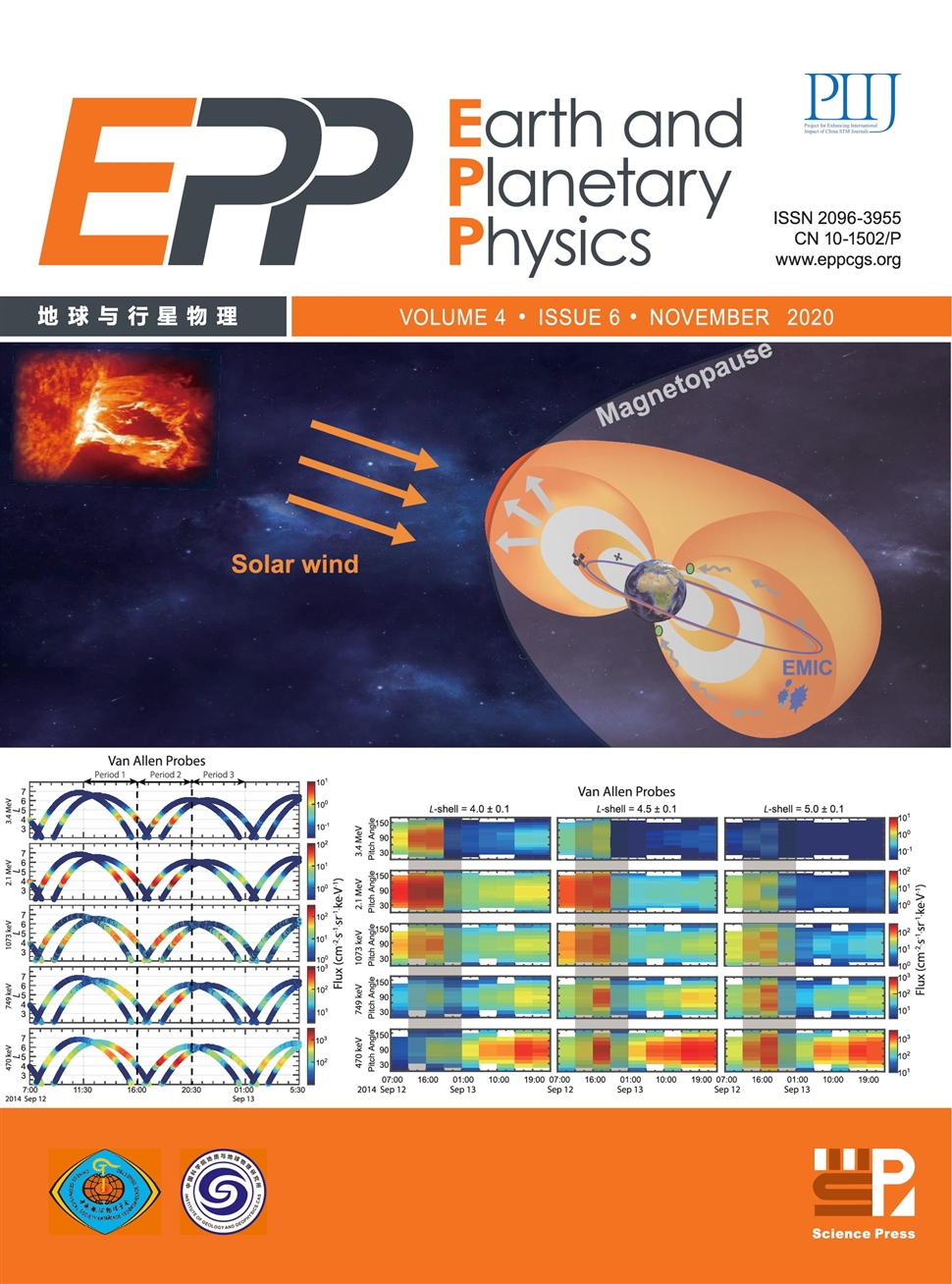An ICME impact on the Martian hydrogen corona
作者:Qi Xu,XiaoJun Xu,Qing Chang,JiaYing Xu,Jing Wang,YuDong Ye
摘要:The Martian hydrogen exosphere extends out of the bow shock, forming a "hydrogen corona". The solar wind interacts directly with the hydrogen corona. During an ICME event on 7 March 2015, the SWIA instrument onboard Mars Atmosphere and Volatile Evolution mission (MAVEN) observed that the pick-up H+ fluxes in upstream solar wind were enhanced. Also increased were the penetrating H+ fluxes in the Martian atmosphere. Quantitatively, these penetrating H+ fluxes cannot increase by a factor of 5 simply due to a factor of 3 increase in the solar wind density, suggesting that the increased abundance of exospheric hydrogen upstream of the bow shock was a consequence of the passage of the ICME. A denser outer hydrogen corona at high altitudes suggests that the expansion of the neutral atmosphere was caused by the ICME. The excited and heated hydrogen exosphere probably indicates an elevated hydrogen escape rate during an ICME.
发文机构:State Key Laboratory of Lunar and Planetary Sciences
关键词:MARSHYDROGENCORONAICME
分类号: P18[天文地球—天文学]
- Inertial gravity waves observed by a Doppler wind LiDAR and their possible sources
- Anomaly distribution of ionospheric total electron content responses to some solar flares
- Editorial Committee of Earth and Planetary Physics
- Mars Ion and Neutral Particle Analyzer (MINPA) for Chinese Mars Exploration Mission (Tianwen-1): Design and ground calibration
- The source of tropospheric tides
- Morphology and possible origins of the Perm anomaly in the lowermost mantle of Earth
- Characteristics of the quasi-16-day wave in the mesosphere and lower thermosphere region as revealed by meteor radar,Aura satellite,and MERRA2 reanalysis data from 2008 to 2017
- An ICME impact on the Martian hydrogen corona
- Treatment of discontinuities inside Earth models:Effects on computed coseismic deformations
- Recent investigations of the near-Mars space environment by the planetary aeronomy and space physics community in China


